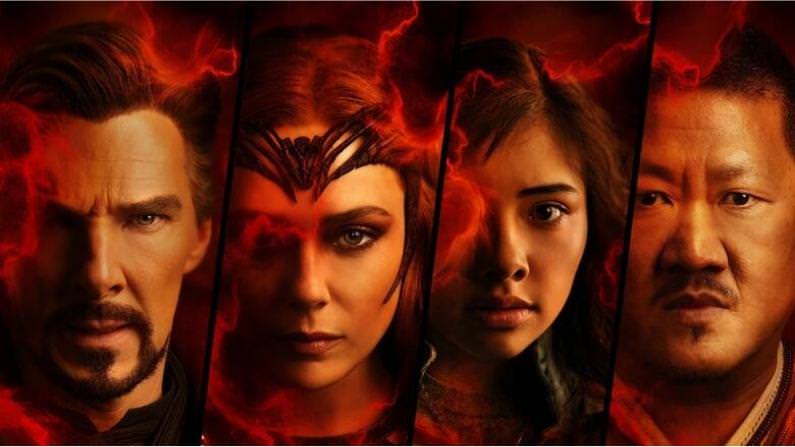For the most part, Phase Four of the MCU seems designed to give us a bit of a break from the desperate seriousness of the Infinity Saga. It helps that the self-contained stories in “Shang Chi and the Legend of the Ten Rings” and “Spider-Man: No Way Home,” not to mention the slightly baffling non-sequitur that was the “Eternals”, are allowed to exist without the narrative pressure of a 20-film arc. Thanos is gone, so everybody still left gets to start over with solo film sequels that function like origin story resets. The Disney+ episodic treatments like “WandaVision,” “Falcon and Winter Soldier” and “Loki” have also taken advantage of this freedom by exploring long-form ideas in the calorie-free environment that exists now after “Endgame.” It has never been boring, not even a little bit, but Marvel is becoming fun again.
Dr. Strange played a pivotal role in the conclusion of the Infinity War and has been channeling his survivor’s guilt (assuming someone like him feels such a thing) into the honing of his craft as a sorcerer. Marvel is smart to keep Dr. Strange front and center as a Phase Four property. Every bit as snarky and arrogant as Tony Stark, Stephen Strange has taken over the role of cynical quality control in Ironman’s absence, which we need in a universe as sprawling and confusing as Marvel’s. Benedict Cumberbatch essentially co-starred with Tom Holland in the latest Spider-Man movie and was at the heart of that film’s dramatic struggle. When we last saw him on screen with Spidey, he was tinkering with things he knew were better left alone. I’m talking about the multiverse, of course, and the messing about he and his younger superhero colleague got up to in “No Way Home” was guaranteed to have far-reaching consequences in their world and beyond.
One of the things I’m often asked when a new Marvel movie gets released is “do I need to be caught up on all of the other films to enjoy this?” My answer is usually a highly conditional “no,” so long as the questioner is willing to do their homework with a few essential titles. In the case of “Dr. Strange and the Multiverse of Madness,” that list would include the first Dr. Strange movie, the two Infinity War movies, the latest Spider-man adventure and the WandaVision television show. “The Multiverse of Madness” finds Dr. Strange and Scarlett Witch still struggling to make sense of what it cost them to protect humanity from Thanos’ judgment. Strange’s nascent understanding of multiple universes intersects with Wanda’s when a new and very special reality-hopping youngster, America Chavez, lands in their world. I can’t say more than that without ruining things, but I will tell you that matters quickly get grim and weird. Over the course of its two quick hours, “The Multiverse of Madness” is a trippy head game, with too many stunning alternate Earths and fan service cameos to count. The cast is as good as ever, but the script doesn’t always live up to Marvel’s standards for tight, funny and consequential dialogue. With more than the usual amount of “believe in yourself” eye-rollers for the action to get snagged on, the plot occasionally lags behind the special effects.
I can’t believe I’m saying it, but there is almost too much “Madness” in this movie. And because it’s a Marvel story, it has to be judged against the studio’s own track record. So, no, it is not as polished or as focused as the best entries in the MCU, but I kind of loved it. “Dr. Strange and the Multiverse of Madness” is incredibly fun, and a great jumping-off point for future craziness.






